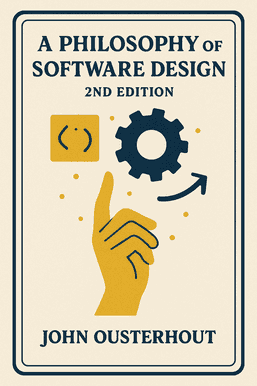What is
Clean Architecture by Robert C. Martin about?
Clean Architecture provides a blueprint for designing modular, maintainable software systems by separating business logic from technical implementation. It emphasizes principles like SOLID design, component cohesion, and dependency management to create adaptable architectures. The book advocates for layered structures that prioritize testability and independence from frameworks, databases, or UIs, ensuring long-term scalability.
Who should read
Clean Architecture?
This book is essential for software architects, senior developers, and engineering managers seeking to master scalable system design. It’s also valuable for mid-level programmers aiming to transition into architecture roles or improve code maintainability. Robert C. Martin’s insights are particularly relevant for teams working on complex, long-lived projects.
Is
Clean Architecture worth reading?
Yes—it’s a seminal work that codifies decades of software design wisdom into actionable principles. While geared toward experienced practitioners, its clear explanations of dependency inversion, boundary layers, and architectural patterns make it a foundational resource for anyone serious about building robust systems.
What are the SOLID principles in
Clean Architecture?
The SOLID principles are five design guidelines for writing flexible code:
- Single Responsibility: Each class handles one task.
- Open/Closed: Extend functionality without modifying existing code.
- Liskov Substitution: Subclasses shouldn’t break parent behavior.
- Interface Segregation: Avoid overly broad interfaces.
- Dependency Inversion: Depend on abstractions, not concretions.
These principles reduce coupling and simplify future changes.
How does
Clean Architecture achieve framework independence?
By enforcing strict boundaries between business rules and technical details (like databases or web frameworks), the architecture ensures core logic remains unaffected by external tools. This is achieved through dependency inversion and encapsulating volatile components behind interfaces.
What is the dependency rule in
Clean Architecture?
Source code dependencies must point inward—higher-level policies (business logic) should never depend on lower-level details (databases, APIs). This prevents changes in infrastructure from cascading into core systems, maintaining long-term flexibility.
How does
Clean Architecture improve testability?
By isolating business rules into independent layers, developers can test core logic without needing connected databases, UIs, or external services. This promotes unit testing and reduces reliance on fragile end-to-end tests.
Does
Clean Architecture discourage using frameworks?
No—it advises deferring framework decisions until necessary and decoupling them from core logic. For example, database tools should reside in outer layers, accessed via interfaces to avoid locking the system into specific technologies.
What case studies are included in
Clean Architecture?
The book features a practical example demonstrating how to structure a system with vertical (feature-based) and horizontal (layer-based) boundaries. It shows how to apply SOLID principles, manage dependencies, and isolate business rules from infrastructure concerns.
What are common critiques of
Clean Architecture?
Some argue its strict layering can lead to over-engineering for simple projects. Others note that real-world teams often choose frameworks early, requiring careful balancing between book principles and practical constraints.
How does
Clean Architecture compare to Martin’s
Clean Code?
While Clean Code focuses on class/method-level practices, Clean Architecture scales these ideas to system design. Both stress maintainability, but the latter introduces structural patterns for managing complexity across large codebases.
Why is
Clean Architecture relevant for modern software development?
As systems grow and technologies evolve, its emphasis on separation of concerns helps teams adapt to new tools (e.g., cloud services, AI APIs) without rewriting core logic. This makes it particularly valuable in agile environments.














